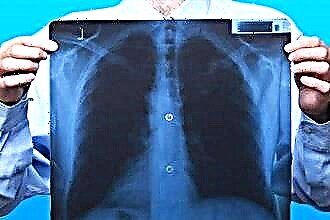Cardiovascular pathology ranks first in the world in the ranking of chronic diseases and mortality. The risk of developing life-threatening complications, which include myocardial infarction, stroke, and rhythm disturbances, ranges from 4 to 10%. The lethal outcome caused by a violation of the electrical activity of the heart is represented by three mechanisms: fibrillation (flickering) of the ventricles, electromechanical dissociation, or asystole. These conditions are accompanied by circulatory arrest and require urgent resuscitation measures.
In what cases does asystole most often occur?
Asystole (another clinical name - isoline) is called the termination of synthesis and conduction of electrical impulses in the heart. The development of pathology is a nonspecific consequence of many conditions.
According to the recommendations of the American Society of Cardiology, ventricular asystole develops in the following cases:
hypovolemia (reduced volume of circulating blood due to trauma, damage to the integrity of the arteries, redistribution of fluid in the vascular bed);
- hypoglycemia - a glucose deficiency that often develops in diabetic patients after physical activity or when they go to bed without observing the diet and the use of insulin;
- hypoxia - oxygen deficiency, which is delivered to organs and tissues. The condition develops against the background of cardiac or respiratory pathology, blood diseases;
- electrolyte imbalance, especially potassium metabolism (hypo- and hyperkalemia). An increased concentration of ions accompanies injuries, metabolic disorders, renal failure and prolonged compression syndrome;
- acidosis - a decrease in blood pH due to the accumulation of under-oxidized products;
- hypothermia is one of the most common causes of death of a child in the first days of life (sudden infant death syndrome) due to exposure to low temperatures, which inhibits the activity of the nervous system and the pacemaker;
- tense pneumothorax - a pathology characterized by the accumulation of air in the pleural cavity, which compresses the lung tissue;
- thrombosis - blockage of the vessels of the heart or brain with a blood clot;
- intoxication with poisonous substances or medications;
- tamponade - the accumulation of blood in the pericardial cavity due to rupture of the heart wall.
These conditions develop with myocardial infarction, traumatic shock, overdose of pharmacological drugs.
According to Wikipedia, asystole is the resultant condition after ventricular fibrillation, paroxysmal or torsades de pointes, or other hemodynamic arrhythmias.
What are the clinical and physiological signs of the condition
The development of ventricular asystole is accompanied by the classic symptoms of clinical death:
unconsciousness (with sudden development - a person falls);
- lack of pulsation in the carotid arteries;
- reaction of the pupil to light (pathological dilation).
- lack of breathing;
- decreased muscle tone;
The pathophysiological mechanisms of the development of signs are based on the absence of an electrical impulse that causes a reduction in the muscle mass of the myocardium. Stopping blood circulation leads to a disruption in the transport of glucose and oxygen to vital organs: lungs, brain and heart.
Due to metabolic changes, the control of the nervous system (central and autonomic) over conscious activity, involuntary breathing and heartbeat is impaired.
The diagnostic algorithm for suspected asystole includes:
- checking the patient's response to voice, visual images;
- measurement of the pulse on the carotid arteries;
- checking for breathing;
- the reaction of the pupil to light (a special flashlight is used at night).
The initial examination of the patient by a paramedic implies the preliminary exclusion of serious injury as a cause of clinical death.
The diagnosis of "asystole" is made according to electrocardiography data, on which an isoline is determined (a flat line, without teeth and other signs of activity of the cardiac conduction system).
Algorithm of assistance
Treatment of cardiac asystole according to approved clinical protocols implies resuscitation measures in the presence of signs of circulatory arrest. At the prehospital stage (before the arrival of the ambulance team, which must be called by witnesses), it is necessary:
straightening and freeing the airways (unfasten the narrow collar, remove foreign objects from the oral cavity).
- conducting mouth-to-mouth breathing;
- indirect cardiac massage (at least 100 compressions per minute) - this method of artificial contraction of the myocardium contributes to minimal restoration of hemodynamics. The effectiveness of the measure is ensured by the activation of the nervous system and the sinus node.
Emergency doctors use intravenous adrenaline, which activates the autonomic nervous system and triggers cardiac activity.
In a hospital, the patient is treated for the resulting consequences of resuscitation ("postresuscitation disease") and the primary cause of circulatory arrest, which means:
- adequate ventilation of the lungs (using a device or oxygen therapy);
- surgical interventions for injuries;
- correction of metabolic processes;
- the use of antidotes;
- intravenous administration of glucose solution;
- replacement therapy with blood products after significant loss and hypovolemia.
Traditional methods of treatment or prevention of asystole do not exist, cardiac arrest is one of the signs of death, in which urgent resuscitation is required.
Conclusions
The development of asystole is accompanied by a cessation of blood circulation, which is a direct threat to human life. The risk of this condition exists in all patients with chronic diseases or in the presence of acute pathologies with intoxication, metabolic disorders. Diagnostics of the first signs of clinical death, timely call of a doctor and provision of primary care at home contributes to the success of resuscitation.



